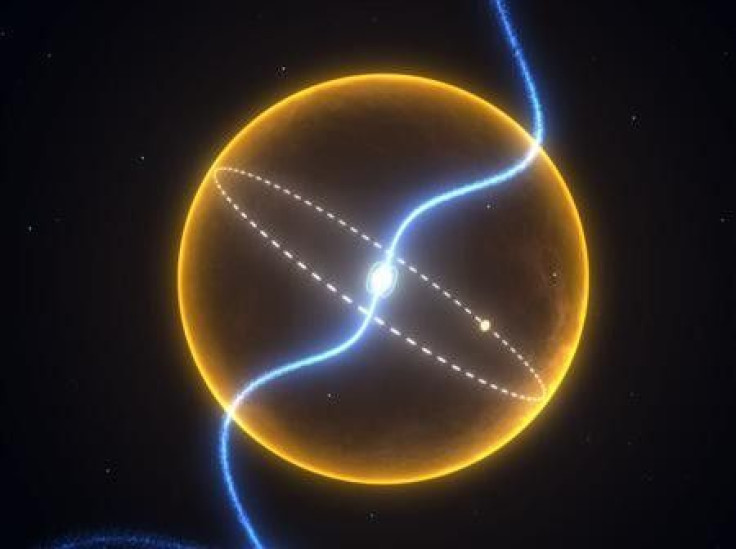Diamond Planet Found Orbiting Pulsar [VIDEOS]

There's a planet made entirely of diamond out there in our Milky Way galaxy that an international team of scientist discovered orbiting a pulsar about 4,000 light-years away.
This small diamond planet, which obits the pulsar PSR J1719-1438, is believed to be denser than platinum, but made entirely of oxygen and carbon.
Pulsars are tiny stars the occasionally give off a burst of radio waves, which scientists don't fully understand. They are formed when the core of a large star is compressed during a supernova and collapses into a neutron star. It then gives off radiation during a fixed period.
The scientists' measurements indicate that the planet has slightly more mass than Jupiter, but is 20 times as dense. It is also lacking in lighter elements like helium and hydrogen.
This confluence of extraordinary factors led the scientists to believe they had stumbled across something unprecedented.
The researchers involved weren't certain what the planet would look like up close. Bu they think the forces upon the planet, which is believed to be the universe's largest diamond — a shocking 1031 carats worth — are so extreme, that it must be largely crystalline.
So what is a planet like that worth?
Hmm, let's see. One carat of diamond can set you back about $5,000, and if diamond planet is 1031 worth of carats, then write that in full and you would get 10,000,000,000,000,000,000,000,000,000,000.
That's one expensive rock if you do the math!
Astronomy journals reported that if the planet was a gas giant, its diameter might put it within range of the point at which the gravitational forces being placed upon it would rip it apart.
It's highly speculative, but if you shine a light on it, I can't see any reason why it wouldn't sparkle like a diamond, Travis Metcalfe of the National Center for Atmospheric Research in Boulder, Colo., told New Scientist.
The team that made the discovery comprises of scientists from Australia, Germany, Italy, the United Kingdom, and the United States. The discovery was made using a 64-meter radio telescope in Parkes, Australia.
The ultimate fate of the binary is determined by the mass and orbital period of the donor star at the time of mass transfer, said Benjamin Stappers from the University of Manchester, to Astronomy. The rarity of millisecond pulsars with planet-mass companions means that producing such exotic planets is the exception rather than the rule, and requires special circumstances.
Check out these videos of the diamond planet below.
So what sound does a pulsar make?
© Copyright IBTimes 2024. All rights reserved.












